Literally the first incomplete dominant Ball Python morph, the Pastel has been around since 1997, when NERD first produced it. Though it’s nothing new, the Pastel Ball Python is something of an essential for many combos.
Morph type
The Pastel Ball Python is a single gene incomplete dominant morph. Breed two together and you can get a Super Pastel, which is the homozygous form of the morph.
Though Pastel is beautiful in its own right, you most often see it in combinations with other genes. This is where it’s true potential stands out.
It brightens everything, jumbles up the pattern, and just makes every morph better to put it simply!
Description

Take everything you love about normal Ball Pythons, make it brighter and more interesting – and what you have is a Pastel.
Dorsal: The dorsal patterning is jumbled up and busier, while the belly pattern is brighter and reduced. Overall, the colouration is much brighter than normal, and this is what has made Pastel so popular.
Pattern: Nice examples of Pastel Ball Pythons have almost yellow blotches on their dorsum and flanks, along with grey areas of blushing in amongst their black background colour.
Though these features are common to several morphs, tell-tale characteristics of Pastel are green eyes in hatchlings and white lips.
Many Pastels do grow darker as they age, with some even taking on a muddy appearance. If you want to choose one that will stay bright, I recommend asking to see photos of the parent snakes for reference.
Does the Pastel Ball Python have genetic issues?

As far as we can tell, the Pastel morph has no genetic issues, and only affects the snake’s appearance. It doesn’t appear to make the snakes grow bigger, or have a different temperament.
Breeding tips
The Pastel’s main function is to brighten up combinations, and that is what you should use it for. It’s been around for a long time and found it’s way into literally every major breeder’s collection. Everyone knows, for example, that Pastel makes super popular morphs like Clown and Pied even better.
That said, we’re still finding surprising effects when adding Pastel to new morphs. The Highway morph (Yellow Belly and Gravel), for example, is stunning – but add in Pastel and it is on a whole other level!
Let’s check out some examples…
Some examples of Pastel morph combinations here at Ballpythonbreeder.co.uk:
1. Pastel Bongo Ball Python
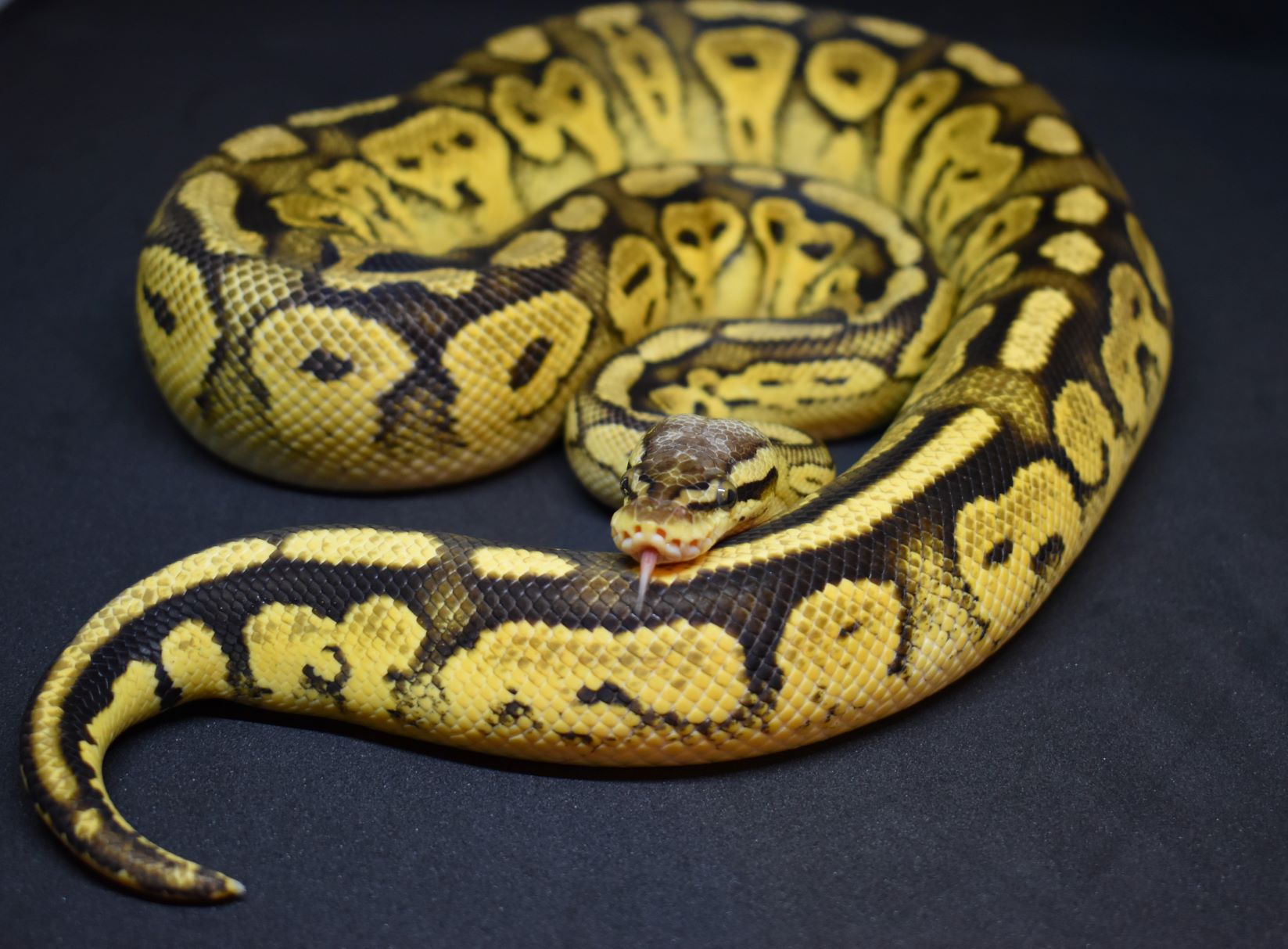
This morphs combines Pastel with another incomplete dominant gene: Bongo. Like most Pastel combos, it’s simple but very effective.
2. Pastel Clown Ball Python
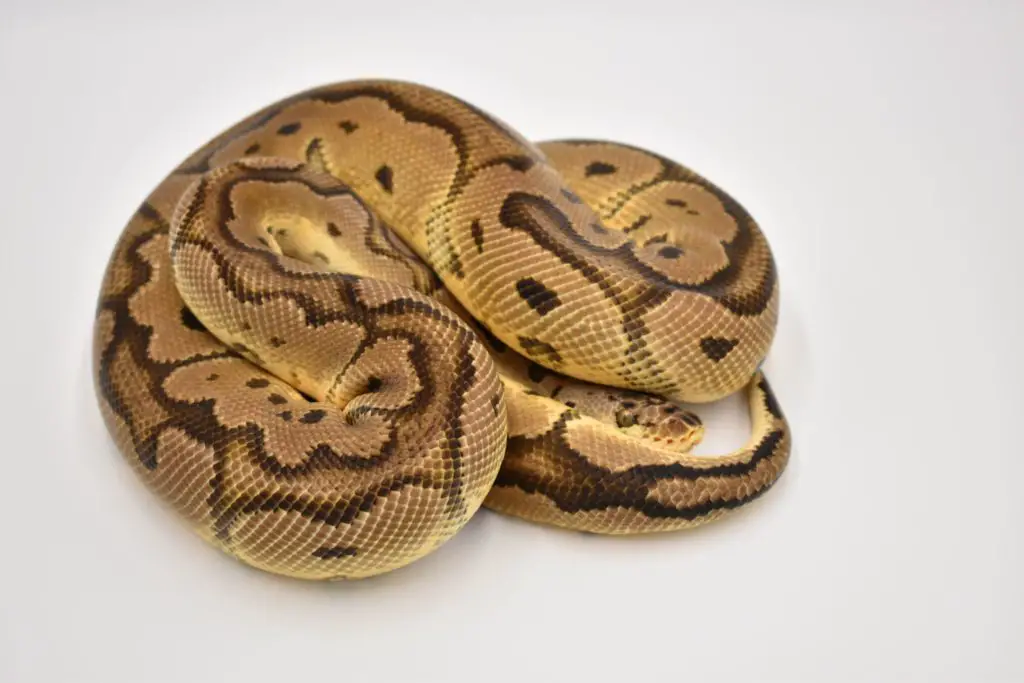
Pastel and the recessive gene Clown make a nice, bright snake with all the breeding potential of Clown. You might also notice that this snake has stunning, golden eyes.
3. Acid Pastel Ball Python
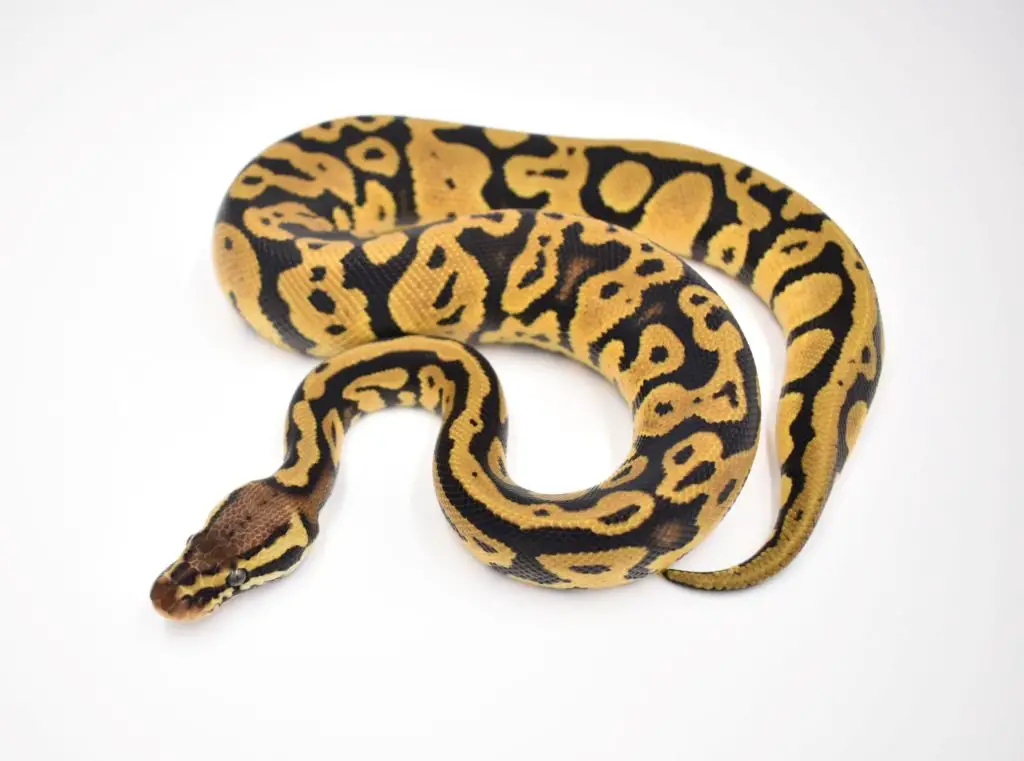
Acid has no super form, being a dominant gene – but adding Pastel to it produces such a good result that it doesn’t really matter. This jumbled up pattern and brightening effect can be seen when adding Pastel to Acid, Confusion, Static or Leopard.
4. Spinner Blast Ball Python
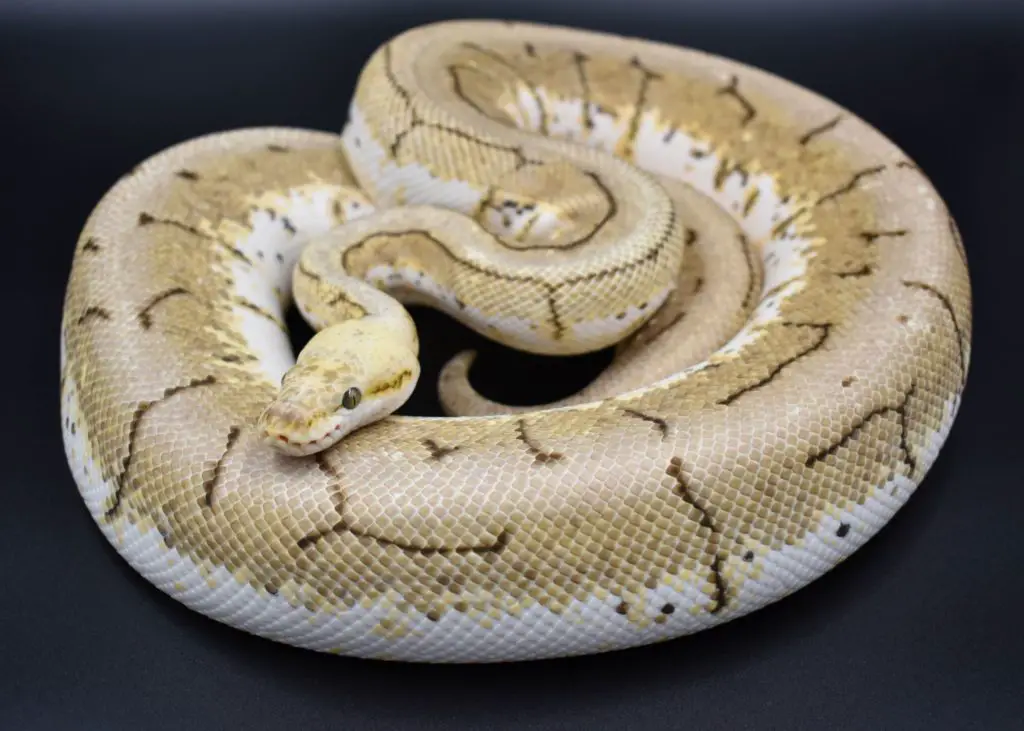
The Spinner Blast morph is a combination of the dominant genes Spider and Pinstripe with Pastel. Often, how bright a Spinner Blast is depends on how bright the Pastel gene was that went into it. Some Pastels are muddy, whereas others are bright, and this variation plays a big role in breeding project outcomes.
5. Lemonblast Ball Python
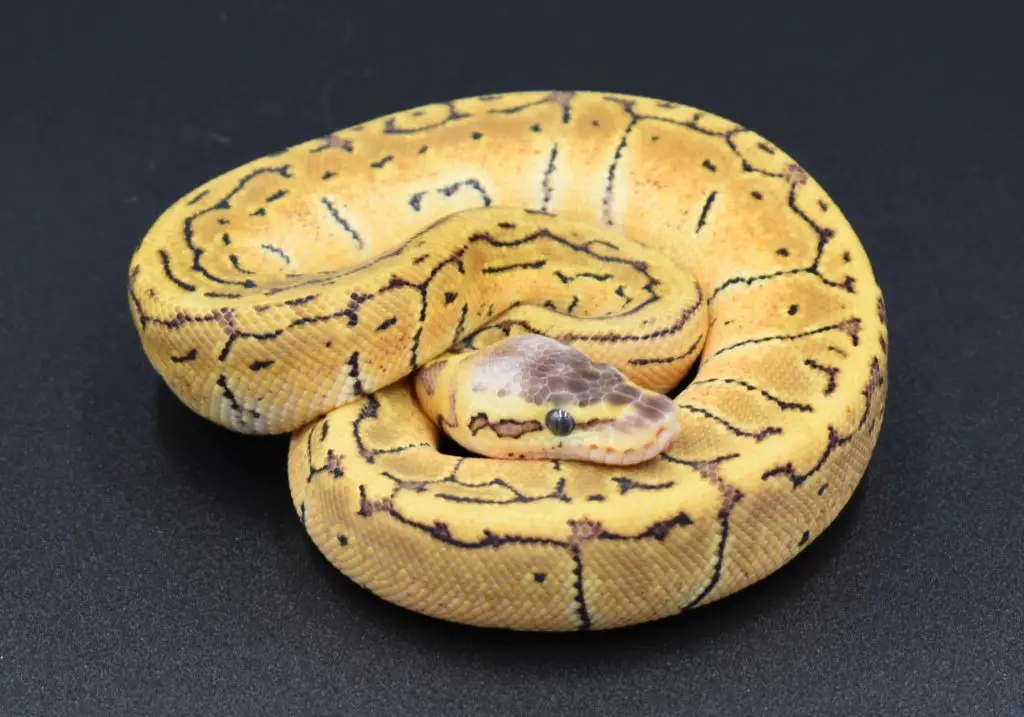
Lemonblast combines the dominant gene Pinstripe with Pastel. Again, it’s simple but produces a spectacular snake if the parents’ Pastel gene was a bright variation.
6. Pastel Butter Ball Python
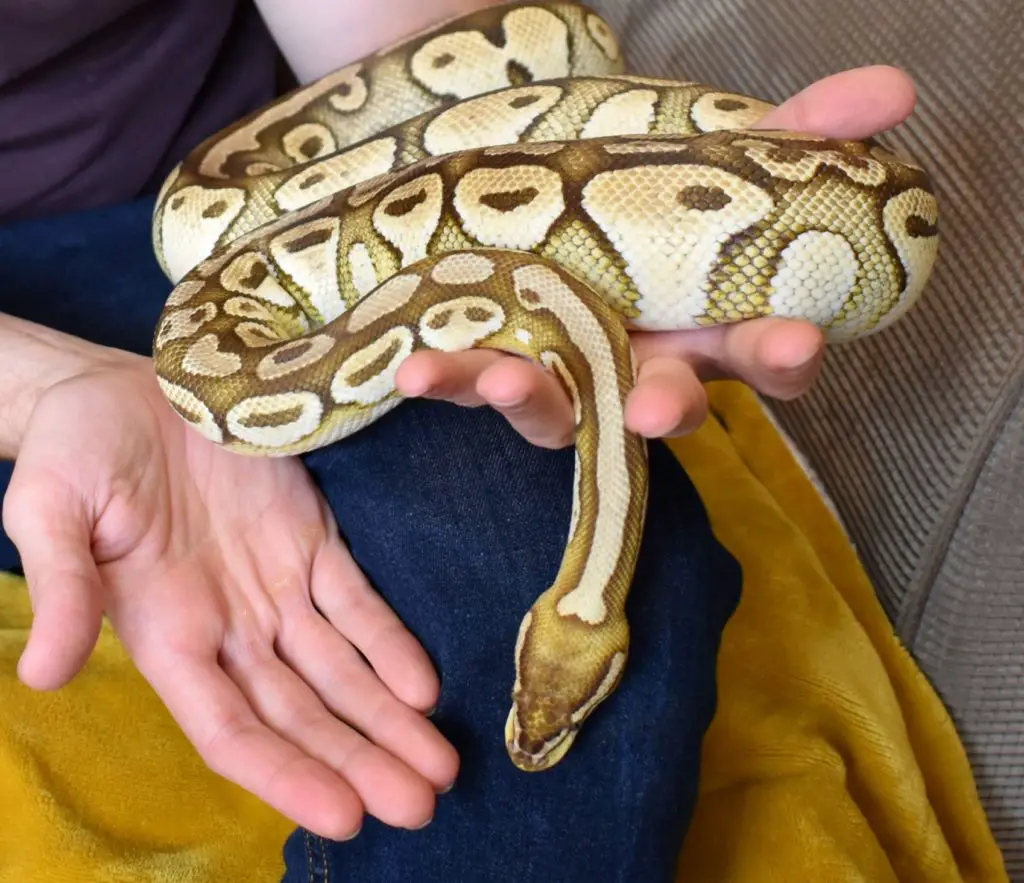
A combination between Pastel and an incomplete dominant gene – Butter – the Pastel Butter is a bright, colorful snake with a blend of subtle brown, yellow, and cream colors.
7. Pastel Spotnose Clown Ball Python
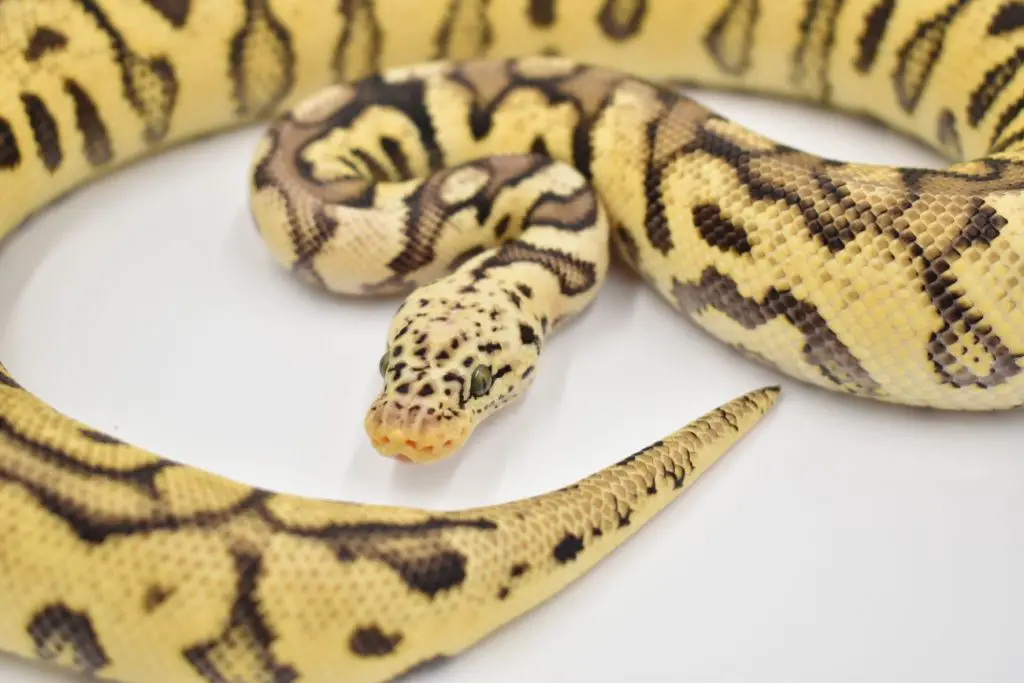
Spotnose is another incomplete dominant gene, but one that jumbles things up nicely when combined with Pastel, and even more so when combined with Clown. As you can see from the photo above, it’s not hard to guess why this morph is popular!
FAQ relating to the Pastel Ball Python:
Are pastel ball pythons good pets?
Pastel Ball Pythons are great pets. They’re just as docile and hardy as regular Ball Pythons, but a little more colorful. Though some genes like Spider and Puzzle have been linked to neurological issues and grouchiness respectively, no such differences are linked to the Pastel gene.
*Note: not everyone agrees Puzzle is linked to a fiery temperament, but many breeders believe it to be true from their experience.
How do you tell if my ball python is a pastel?
Pastels are always a little brighter than regular Ball Pythons, and have a more blushed-out color on the top of their head. They also often have green eyes and white lips.
Once fully grown, they generally have two tones of color on the blotchy yellow markings along their flanks. If you look closely, the top of each marking will be darker than the bottom, and you can see the difference over the space of a couple of scales – it’s a sudden transition.

How big do super pastel ball pythons get?
Super Pastel Ball Pythons get to exactly the same size as normal and Pastel Ball Pythons. The super form of Pastel only affects appearance, not size or temperament. So, a male Super Pastel will reach 3-3.5ft (90-106cm) on average, and a female 3.5-4.5ft (106-137cm).
Pastel Ball Python Summary
| First produced by: | NERD, 1997 |
| Morph type: | Incomplete dominant |
| Genetic issues: | None |
| Goes well with: | All recessive genes, Highways and Freeways |
Also on this topic:
- Acid Ball Python: A Complete Morph guide and breeding tips
- Coral Glow Ball Python
- Champagne Ball Python Morph Guide and Breeding Tips
- Mojave Ball Python: A complete morph guide and breeding tips
- Ivory Ball Python morph guide
